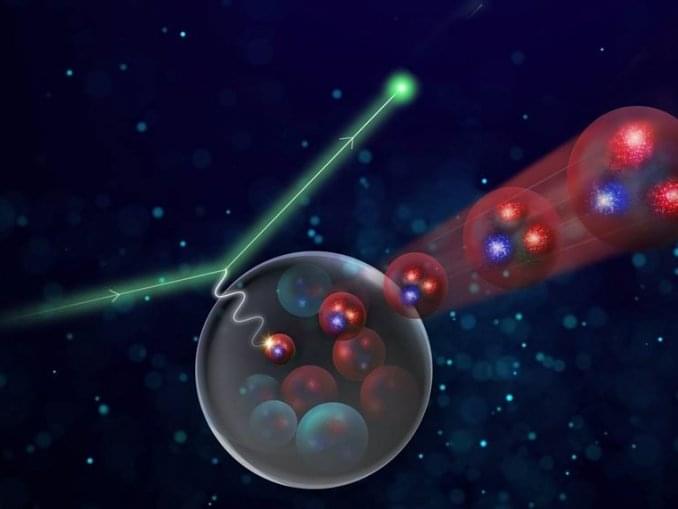Protons populate the nucleus of every atom in the universe. Inside the nucleus, they cling tightly to neighboring protons and neutrons. However, it may be possible to knock out protons that are in a smaller size configuration, so that they interact less with nearby particles as they exit the nucleus. This phenomenon is called color transparency. Nuclear physicists hunting for signs of color transparency in protons recently came up empty handed.
The Impact.
The theory that describes the behavior of particles made of quarks is called quantum chromodynamics (QCD). QCD includes many common subatomic particles, such as protons and neutrons. It also predicts the phenomenon of color transparency. Physicists have observed color transparency in simpler, two-quark particles called pions. If physicists can observe or rule out color transparency for protons, a more complicated three-quark system, they would gain important clues regarding the differences between two-and three-quark systems in QCD.
